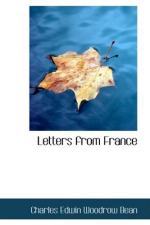The bombardment shattered Pozieres. Its buildings were scattered as you would scatter a house of toy bricks. Its trees began to look ragged. By the time Boiselle and Ovilliers were taken, and the front had pushed up to within a quarter or half a mile of Pozieres, a tattered wood was all that marked the spot. Behind the brushwood you could still see in three or four places the remains of a pink wall. Some way to the north-east of the village, near the actual summit of the hill, was a low heap of bleached terra-cotta. It was the stump of the Pozieres windmill.
Since then Pozieres has had our second bombardment, and a German bombardment which lasted four days, in addition to the normal German barrage across the village which has never really ceased. You can actually see more of the buildings than before. That is to say, you can see any brick or stone that stands. For the brushwood and tattered branches which used to hide the road have gone; and all that remain are charred tree stumps standing like a line of broken posts. The upland around was once cultivated land, and it should be green with the weeds of two years. It is as brown as the veldt. Over the whole face of the country shells have ploughed up the land literally as with a gigantic plough, so that there is more red and brown earth than green. From the distance all the colour is given by these upturned crater edges, and the country is wholly red.
[Illustration: A MAIN STREET OF POZIERES IN A QUIET INTERVAL DURING THE FIGHT]
[Illustration: THE CHURCH, POZIERES]
But even this did not prepare one for the desolation of the place itself. Imagine a gigantic ash heap, a place where dust and rubbish have been cast for years outside some dry, derelict, God-forsaken up-country township. Imagine some broken-down creek bed in the driest of our dry central Australian districts, abandoned for a generation to the goats, in which the hens have been scratching as long as men can remember. Then take away the hens and the goats and all traces of any living or moving thing. You must not even leave a spider. Put here, in evidence of some old tumbled roof, a few roof beams and tiles sticking edgeways from the ground, and the low faded ochre stump of the windmill peeping over the top of the hill, and there you have Pozieres.
I know of nothing approaching that desolation. Perhaps it is that the place is still in the thick of the fight. In most other ruins behind battlefields that I have seen there are the signs of men again—perhaps men who have visited the place like yourself. There is life, anyhow, somewhere in the landscape. In this place there is no sign of life at all. When you stand in Pozieres to-day, and are told that you will find the front trench across another hundred yards of shell-holes, you know that there must be life in the landscape. The dead hill-side a few hundred yards before you must contain both your men and the Germans. But as in most battlefields,




